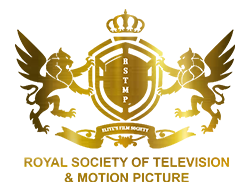
How Palette Choices Impact Storytelling
We are all aware of the impact of a compelling film narrative. However, have you ever paused to contemplate the unspoken harmony of colours that operates in the background? A film’s palette, the assortment of colours employed throughout, transcends mere visual appeal. It serves as a fluent language for filmmakers, intricately weaving emotions and underlying themes into the very fabric of their stories.
Picture a film festival. One film bursts forth with vivid colours, a sun-soaked California beach comedy bathed in radiant golden hues. Another is enveloped in a calm, subdued palette, a Nordic noir thriller film where shadows harbour secrets. These choices are deliberate. The California film exudes “fun,” while the noir whispers “suspense.” Let’s delve deeper into this colourful conversation.
Setting the Mood: Warm yellows and oranges evoke feelings of happiness and comfort, making them ideal for peaceful settings or cheerful scenes. In contrast, blues and greens can induce a sense of tranquility or introspection, making them suitable for serene environments or contemplative moments.
Consider the lush greens and earthy browns of “The Lord of the Rings,” transporting viewers to the verdant landscapes of Middle-earth. Similarly, think of the cold blues and grays of “Blade Runner,” depicting a dystopian future stripped of warmth.
Highlighting the Hero’s Journey: Palettes can also serve to visually depict a character’s journey. For instance, in a coming-of-age film narrative, a protagonist might begin amidst subdued colours and then progressively shift towards brighter hues as they grow in self-assurance.
Consider Katniss Everdeen’s evolution in “The Hunger Games.” Initially dressed in earthy tones of brown and green, mirroring her humble existence in District 12, she later embraces a bold red during the Games, symbolizing her courage and resistance.
Symbolism and Subtext: Colours also hold symbolic significance. Consider the persistent presence of red in “Schindler’s List,” serving as a poignant symbol of the brutality of the Holocaust. Similarly, think of the clinical white portraying the futuristic society in “Gattaca,” emphasizing its strict social structure.
Filmmakers are aware of these connotations and employ them to subtly convey profound themes. A touch of red may hint at impending peril, while a splash of yellow could signify optimism.
Creating Contrast: Palettes are not isolated elements. Similar to how complementary colors in a painting enhance visual impact, contrasting palettes within a film can be remarkably powerful. Picture a scene where lively film festival colors sharply contrast with the protagonist’s subdued clothing, underscoring their sense of being an outsider.
Genre Expectations: Film genres frequently adhere to specific color schemes. For instance, horror movies typically utilize deep blues and greens, whereas romantic comedy films favor warmer tones like oranges and pinks. Filmmakers have the option to defy these norms for unexpected effects or adhere to them to evoke a sense of comfort.
A horror film saturated with vibrant, cheerful colours might unsettle viewers, while a gritty war film dominated by subdued tones might feel strangely clinical.
The Power of Collaboration: The film’s color palette isn’t solely the director’s domain. It’s a collaborative effort involving filmmakers such as the cinematographer and film production designer. Working together, they establish a unified visual language that enhances the narrative and intensifies its emotional resonance.
Next time you immerse yourself in a film, pause to admire the intricate interplay of colours unfolding on screen. This silent language communicates profoundly, revealing hidden depths and intensifying feelings without needing words.



Sorry, the comment form is closed at this time.